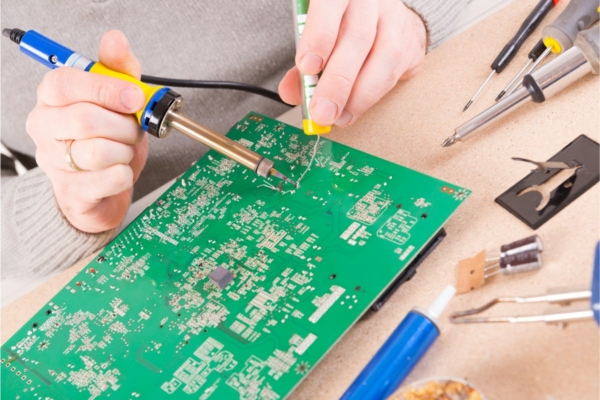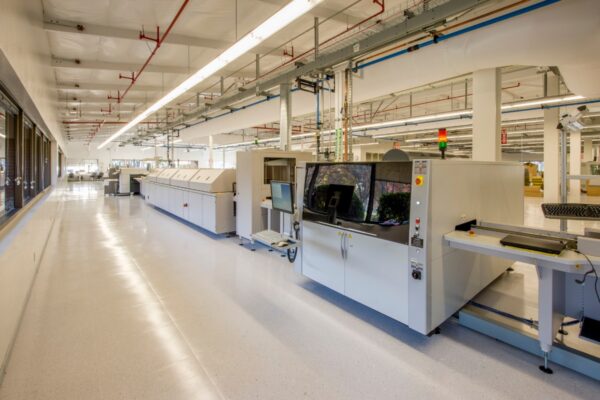What is Anti-Solder Ball
Anti-solder ball is a technique or method used in the PCB industry to prevent the formation of solder balls on the surface of a PCB during the soldering process. Solder balls are small balls of metal alloy that can form on the PCB after soldering, leading to various issues such as component misalignment, joint quality depletion, and potential shorts or burns.
To address the factors that contribute to solder ball formation, several measures can be taken. These include controlling humidity levels in the construction environment to prevent excess moisture from affecting the soldering process. Proper handling and storage of the PCB to avoid dampness or moisture contact are also crucial. Additionally, using the appropriate amount of flux in the solder paste helps prevent excessive flux residue, which can contribute to solder ball formation.
Maintaining the correct temperature and pressure during the reflow process is essential to prevent solder ball formation. This may involve optimizing the reflow profile and ensuring proper equipment calibration. Thorough cleaning of the PCB after reflow, including wiping away excess solder paste or flux residue, reduces the chances of solder ball occurrence. Lastly, proper preparation of the solder paste, including mixing and storage, can help prevent issues that may lead to solder ball formation.
The specific techniques employed as part of the Anti-Solder Ball approach may vary depending on the PCB assembly manufacturer’s requirements and processes. These measures aim to minimize the occurrence of solder balls, ensuring the overall quality and functionality of the circuit board.
Frequently Asked Questions
What Is the Purpose of a Solder Ball
In the realm of integrated circuit packaging, a solder ball, also known as a solder bump, serves the crucial purpose of establishing contact between the chip package and the printed circuit board. Additionally, solder balls facilitate connectivity between stacked packages in multichip modules.
What Causes Solder Balls on PCB
Solder balls on PCBs occur due to the gassing and spitting of the flux on the wave’s surface or when the solder bounces back from the wave. These issues arise from excessive backflow in air or a significant drop in nitrogen environments.
What Is Solder Ball Defect
A solder ball defect refers to a common reflow defect that occurs during the application of surface mount technology to a printed circuit board. Essentially, it is a ball of solder that becomes detached from the main body, which is responsible for forming the joint that connects surface mount components to the board.
Why Solder Balls After Reflow
In most cases, the presence of solder balls after reflow can be attributed to an inappropriate reflow ramp rate. If the assembly is heated up too quickly, the volatiles in the paste will not have enough time to evaporate before the paste becomes molten. This combination of volatiles and molten solder can lead to the formation of solder spatter (balls) and flux spatter.
What Is the Difference Between Solder Ball and Bump
The solder balls can be placed manually or by automated equipment, and are held in place with a tacky flux. Solder bumps, on the other hand, are small spheres of solder balls that are bonded to contact areas or pads of semiconductor devices or circuit boards. These solder bumps are specifically used for face-down bonding purposes.
Why Does My Solder Ball Up and Not Stick
When soldering silver and using hard or soft solder, it is common to encounter the issue of solder balling up and not sticking. This occurs when the flux has been burnt out, resulting in the absence of a medium for the solder to flow or jump through.
What Is the Shelf Life of Solder Balls
Even with proper storage, solder balls will eventually be exposed to air and undergo oxidation. As the oxide layer thickens, soldering becomes more challenging. Although the rate of oxidation is gradual, the solder balls should remain usable for a minimum of two years. However, their usability may be compromised after this period.
What Material Is Used in Solder Ball
After extensive testing and discussions, the semiconductor industry has predominantly adopted the use of a specific alloy known as SAC (Tin, Silver, Copper) for lead-free product assembly. However, there is still ongoing debate regarding the specific type of SAC alloy to be used.
What Temperature Does Solder Ball Melt
In order to melt the solder ball, either infrared or convection reflow methods can be used. It is important to reach a minimum solder joint temperature (SJT) of 225-235 °C to ensure that the solder volume of the paste and ball melt. However, it is crucial not to exceed the specified PPT of any components. The dwell time for the SJT should be less than three minutes above the eutectic tin/lead solder melting point of 183 °C.





